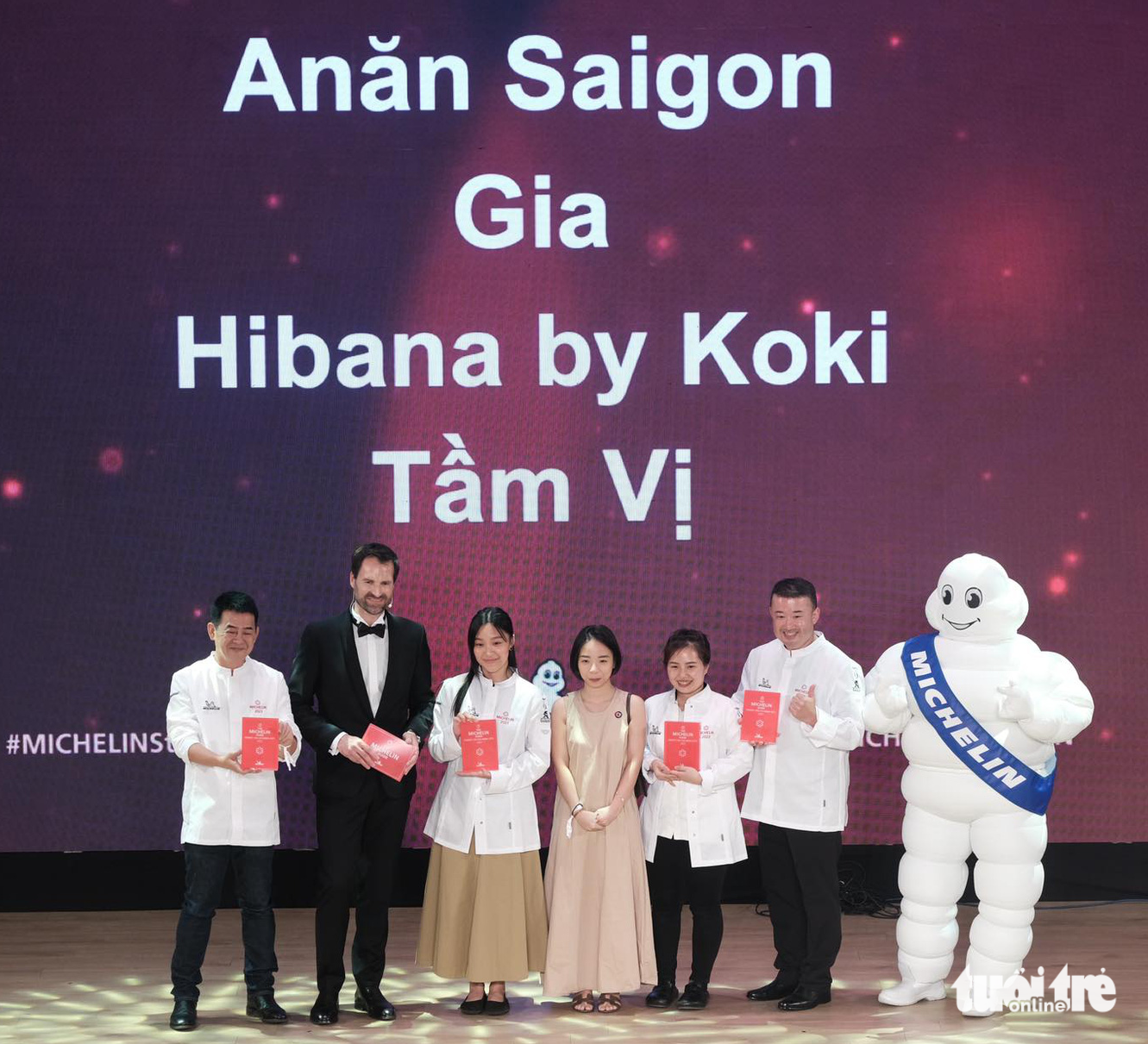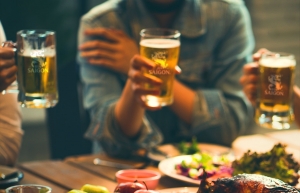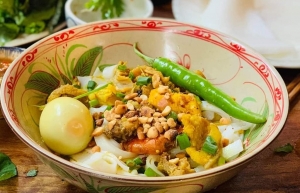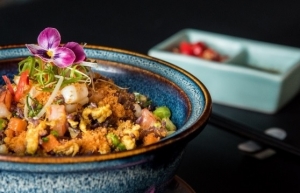Michelin Guide’s role in stimulating culinary tourism
What is the Michelin Guide’s assessment of Vietnamese cuisine after two years of ranking, and how is this year’s ranking different from 2023?
 |
| Gwendal Poullennec, international director of the Michelin Guide |
Vietnamese cuisine is known for its rich flavours, fresh ingredients, and delicate balance, which continues to impress our inspectors. This year’s selection reflects both historical and modern culinary approaches, showcasing restaurants that are deeply rooted in tradition as well as those that bring innovative twists to classic dishes.
These establishments guarantee authentic culinary experiences at a moderate, attractive price, allowing diners to immerse themselves in the lifestyles of Hanoi, Ho Chi Minh City, and the newest addition of Danang through their most important asset – food.
This year, the Michelin Guide has added Danang to our portfolio, marking an expansion and highlighting the evolving culinary landscape of Vietnam. The addition of Danang broadens the culinary map of Vietnam, showcasing the rich and diverse food culture beyond the established hubs of Hanoi and Ho Chi Minh City. This expansion allows the Michelin Guide to introduce food enthusiasts to new and exciting gastronomic experiences in central Vietnam.
And by including Danang, the Michelin Guide acknowledges the unique regional flavours and culinary traditions of Central Vietnam. This region boasts a distinct cuisine that differs from the northern and southern parts of the country, offering diners a chance to explore new tastes and culinary practices.
In fact, Hanoi, Ho Chi Minh City, and Danang each have their own characteristics. The country’s culinary scene sees the vitality, passion, and creativity constantly surprising the market. Not to mention that renowned chefs are increasingly opening restaurants in Vietnam, coupled with a new generation of Vietnamese chefs emerging with a growing customer base.
What criteria must restaurants and eateries meet to be selected for the Michelin Guide, and do these criteria differ between countries?
To assess the quality of a restaurant, inspectors rely on five criteria: quality of the ingredients, mastery of cooking, harmony of the flavours, expression of the chef’s personality in the cuisine, and consistency, both over time and across the entire menu.
As the guide has an international presence, it is essential that its selections are made according to the same criteria and the same methodology everywhere in the world. This is what ensures that a star in Hanoi shows the same promise of quality as a star in New York or Berlin.
Cuisine is a part of a country’s culture and its presence on a global scale is rich and diverse. What factors influence the Michelin Guide on the cuisine of a country and its people?
Cuisine is a fundamental aspect of a country’s culture, reflecting its history, traditions, and the creativity of its people. The Michelin Guide considers five key factors when evaluating restaurants and therefore local culinary scenes.
Firstly, we believe that exceptional cuisine begins with exceptional ingredients. We seek out restaurants that source the freshest, most flavourful, and highest quality ingredients, whether they are locally grown, regionally renowned, or internationally sought-after.
Secondly, our inspectors always appreciate a chef’s skilful command of culinary techniques. This includes both classic and innovative approaches, the ability to elevate simple ingredients, and the precision to execute complex preparations flawlessly.
Thirdly, a truly outstanding dish is more than the sum of its parts. We evaluate how chefs balance and harmonise flavours, creating dishes that are both delicious and thought-provoking, where each ingredient complements and enhances the others.
Next, we believe that great cuisine tells a story. We look for chefs who express their unique personality, heritage, and creativity through their dishes, resulting in a dining experience that is both distinctive and memorable.
Finally, consistency is a hallmark of excellence. We assess not only the quality of individual dishes but also the consistency across the entire menu and over multiple visits, ensuring that diners can expect an exceptional experience every time.
How does the Michelin Guide select a restaurant to inspect, and do they have to pay an annual fee or have any obligations to the guide?
Restaurant selections are exclusively made by the Michelin Guide inspectors. They consist of an international team, representing more than 25 nationalities, who used to be former professionals of the restaurant and hospitality industry and decided to join Michelin to work as full-time inspectors. To select restaurants, our team of inspectors first conducts research before deciding on restaurants to visit.
The research comes from all sources, such as suggestions by our readers, emails, social media, review sites, and publications. Each team member can also nominate restaurants that we deem interesting or possess distinctive qualities such as chef’s skills, tastes, ingredients, uniqueness, and consistency.
Then, each restaurant is visited multiple times, by different inspectors, before inspectors gather to agree on a collective decision regarding the ranking. This decision will be yearly reassessed in order to make sure their recommendation is accurate, trustful, and relevant.
Of course, being selected or awarded within the Michelin Guide is fully free of charge for the restaurants and they can’t impact or exert pressure on the decisions made regarding the guide.
 | Hong Kong street food gets nod from Michelin Guide Twenty three restaurants in Hong Kong were also added to the Michelin guide this year, while there were 12 new entrants from neighbouring Macau. |
 | Michelin Guide bestows stellar accolades on Hanoi and Ho Chi Minh City Vietnam is celebrating the recognition of four exceptional restaurants with coveted Michelin stars. This momentous occasion marks the accolades bestowed on a total of 103 remarkable dining establishments, spanning across four esteemed award categories. |
 | Bia Saigon sponsors Michelin Guide elevating reputation of Vietnamese brands Vietnamese cuisine attracts not only to Vietnamese people, but also to international tourists because of its rich diversity and uniqueness. By collaborating with and sponsoring the Michelin Guide, Bia Saigon reaffirms its commitment to elevating the reputation of Vietnamese brands to the world |
 | Hanoi and Ho Chi Minh City now on the Michelin map As some restaurants in Vietnam were awarded Michelin stars for the first time, high hopes are set for the country’s food and restaurant scene. Gwendal Poullennec, international director of the Michelin Guide, talked to VIR’s Linh Dan about the selection criteria and Michelin’s positive outlook for Vietnam’s culinary landscape. |
 | The Michelin Guide extends to Danang Danang has become the third Vietnamese city to see its gastronomic scene spotlighted by Michelin Guide inspectors, after Hanoi and Ho Chi Minh City debuted on the guide last year. |
 | Royal Pavilion and Vietnam House Restaurant honoured with Michelin awards While Vietnam House Restaurant continues to be listed in the Michelin Selected 2024, The Royal Pavilion is honoured as the only restaurant from the Michelin Selected 2023 list to be upgraded to 1 Michelin Star. |
What the stars mean:
★ Poor ★ ★ Promising ★★★ Good ★★★★ Very good ★★★★★ Exceptional
Related Contents
Latest News
More News
- Vietnam’s industrial output hits seven-year high in 2025 (January 06, 2026 | 17:47)
- GE Vernova powers up Vietnam with first 9HA gas power plant in the country (January 06, 2026 | 16:54)
- From easy money to selective bets: investment prospects for Vietnam in 2026 (January 06, 2026 | 16:51)
- The green hydrogen and ammonia future for Vietnam (January 06, 2026 | 15:03)
- Vietnam’s seafood exports surpass $11 billion in 2025 (January 06, 2026 | 08:51)
- Solid finish for manufacturing after volatile year (January 06, 2026 | 08:50)
- Meiko strengthens Vietnam operations with new PCB plants (January 06, 2026 | 08:49)
- Stock market starts 2026 with growth and governance in focus (January 06, 2026 | 08:45)
- Ho Chi Minh City backs $2 billion AI data centre with dedicated task force (January 06, 2026 | 08:43)
- PM sets January deadline for high-speed rail consultant (January 06, 2026 | 08:40)

 Tag:
Tag:
















 Mobile Version
Mobile Version